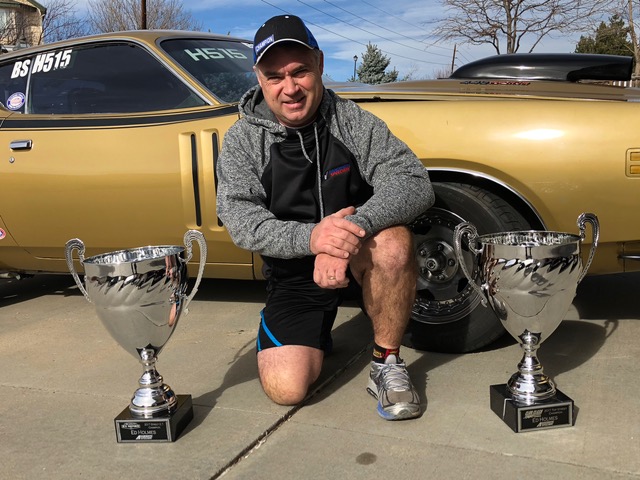In his “day job” as a mechanical engineer for United Launch Alliance, Ed Holmes helps with rocket launches to put satellites into space, but on the weekends, it’s all about ground speed at Bandimere Speedway near Denver, Colorado. In 21 years of drag racing, Holmes, from Trailhead Church in Littleton, has won six track championships, two of them in the 2017 season.
Tell us about your car.
It’s a gold 1971 Dodge Charger RT with a 493 cubic inch motor—a 440 block bored 0.030” over with a 4.15” crankshaft with a compression ratio of 13.5:1. The car is big and pretty heavy but moves pretty good.
Is it specially made for racing?
I can drive it around town, but it’s a little rowdy. Sometimes people rev their engines next to me. I shake my head – but then I usually leave them at the stoplight. On the track I can run in most E.T. [elapsed time] brackets from the street car class to a full-out race car class.
How does the NHRA (National Hot Rod Association) E.T. bracket competition work?
You don’t have to have a fast, full-blown car to go racing. The competition is to meet your “dial-in” – the time you predict it will take your car to drive the quarter-mile track. Cars race two at a time. The slower car takes off first and as they get close to the finish both cars will come side-by-side and in theory finish at the same time. Typical races are single elimination.
What makes for a win?
Getting your dial-in right is key. You make a couple of time trials, then you use factors like wind speed, humidity, temperature and air density to calculate your dial-in. Factors change dramatically here in Denver so you have to keep adjusting.
How about the human factor?
Reaction time is time you don’t get back. At the starting line, there’s a half second between the last yellow and the green light. The key is to get the car and driver to react consistently together for a .020 to .035 second reaction time. Take your foot off early and go “red” which is jumping the start. Leave too late and your competition gets around you at the finish line. If you have a 0.1 second reaction time most generally you’re going home.
How fast do you go?
The car is set up to run 11.60s to 11.70s here in Denver. Sometimes the air is better and I’ll run the quarter mile in the 11.50 second range. At the finish line, I’m going between 114 and 117 miles per hour, depending on weather conditions.


Kathy Heinrichs Wiest is a freelance writer who loves the smell of whole wheat bread in the oven, the feel of an orange being plucked from the tree and the view from her front porch in Kingsburg, California. On Sunday mornings you’ll find her in the fourth pew from the front on the left at Kingsburg MB Church, moved by the hymns and praise songs and inspired by the stories of God at work locally and around the world. She and her husband, Steve, own Dovetail Remodeling. They have two grown daughters, one son-in-law and a precious granddaughter.



















